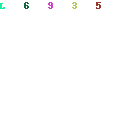bobmax
TPF Noob!
- Joined
- Dec 28, 2012
- Messages
- 10
- Reaction score
- 0
- Location
- Hamshire UK
- Can others edit my Photos
- Photos OK to edit
I see, sorry to have invaded your thread then.
I know what you mean> I don't have an iPad (yet) but my two sons have them welded to their hands...LOL
I know what you mean> I don't have an iPad (yet) but my two sons have them welded to their hands...LOL















